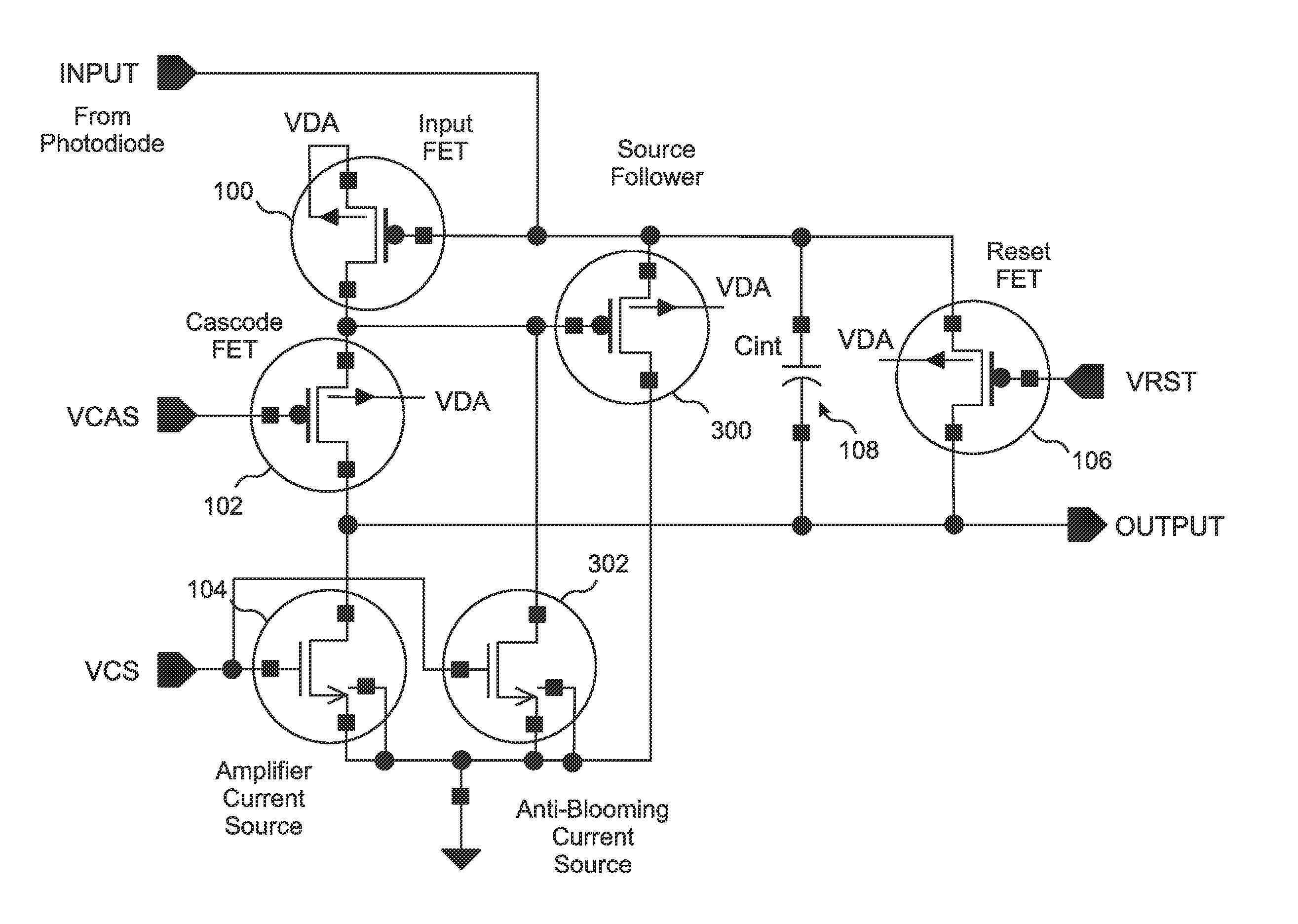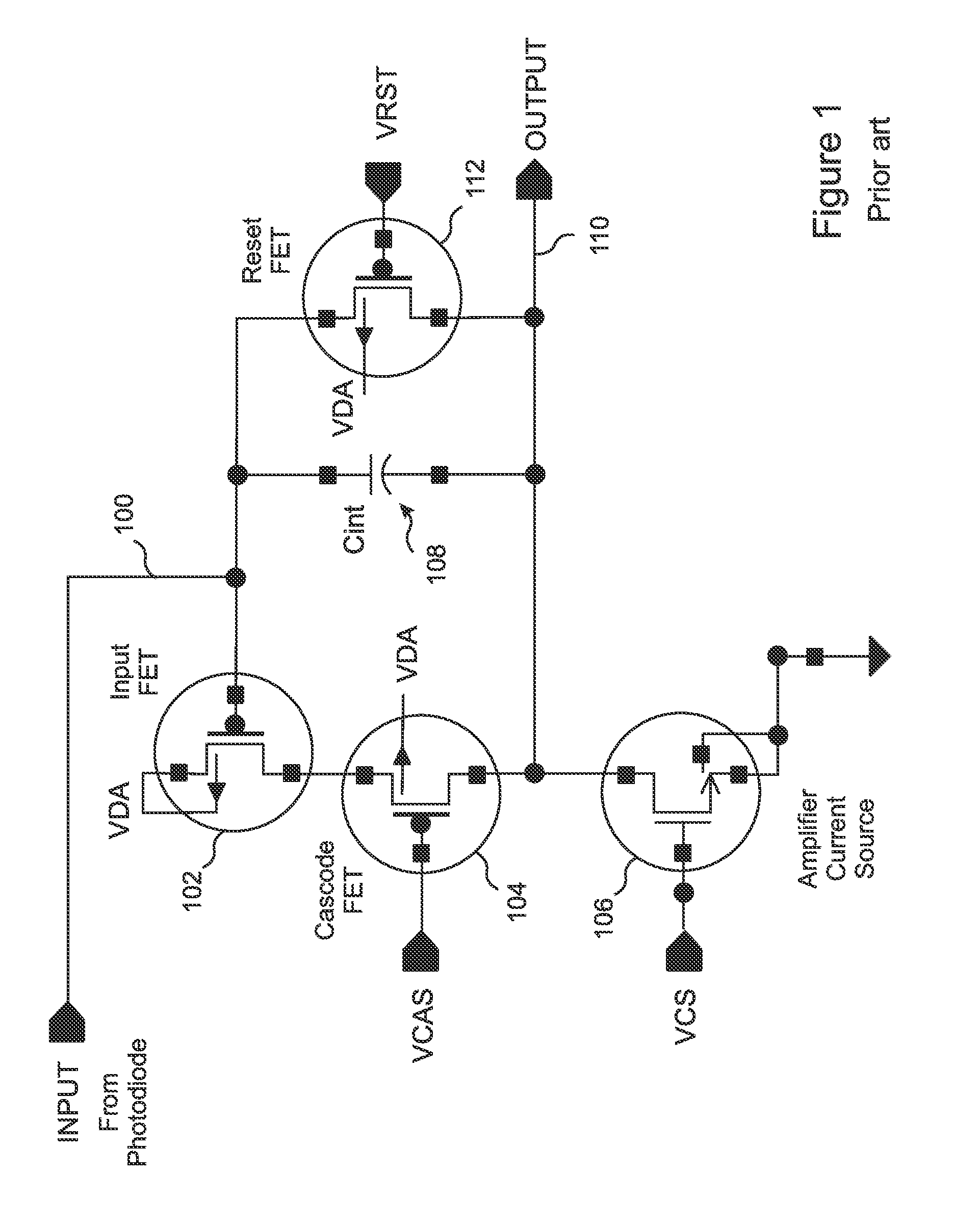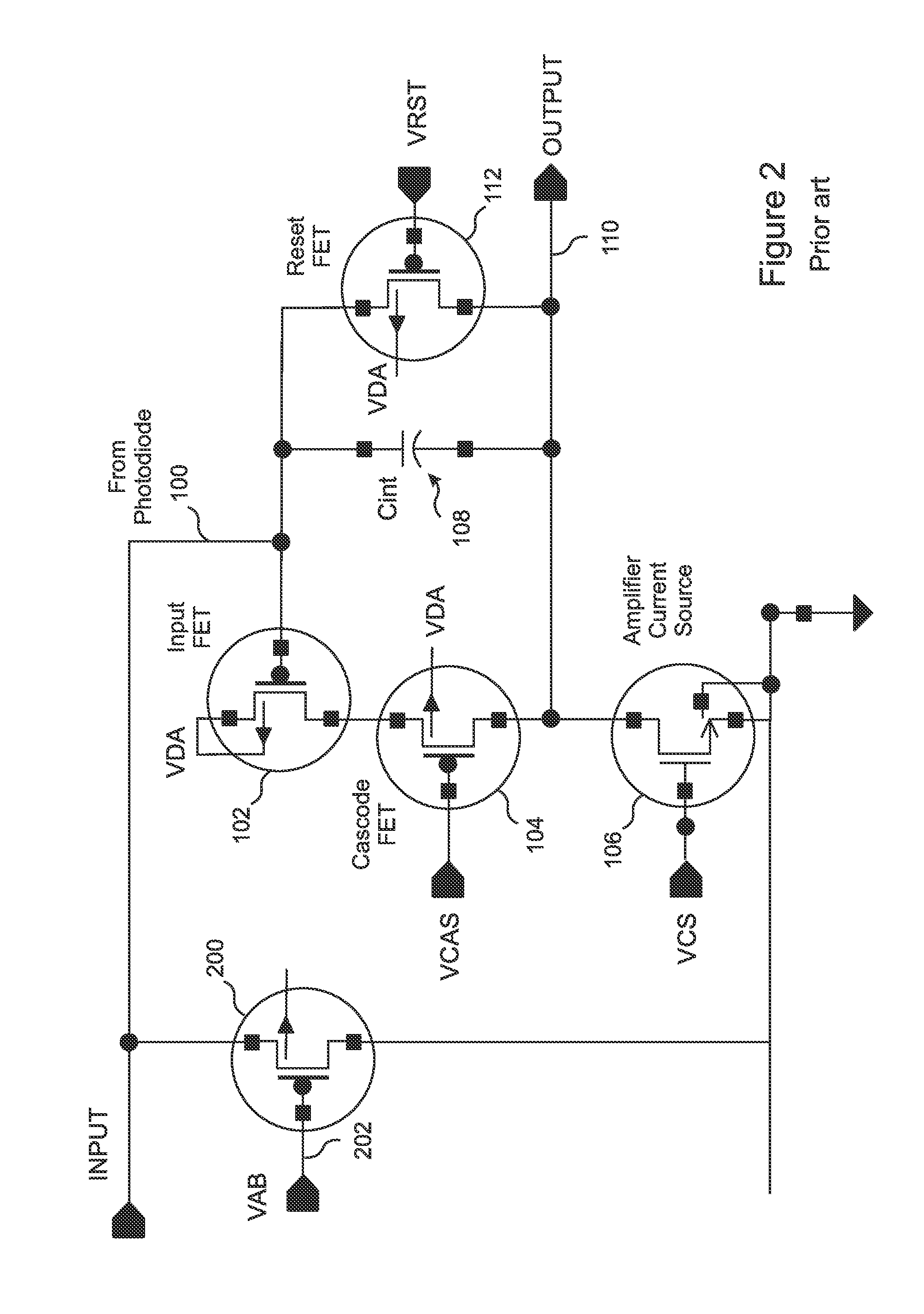Anti-blooming circuit for integrating photodiode pre-amplifiers
a photodiode and pre-amplifier technology, applied in the field of circuits, can solve the problems of affecting the output voltage of the supply, affecting the performance of the supply, and being susceptible to large optical exposures, so as to minimize complexity, space, and cost, and achieve maximum performance.
- Summary
- Abstract
- Description
- Claims
- Application Information
AI Technical Summary
Benefits of technology
Problems solved by technology
Method used
Image
Examples
Embodiment Construction
[0031]The present invention is a preamplifier input clamping circuit that maximizes performance while minimizing complexity, space, and cost. An embodiment of the invention is illustrated in FIG. 3. A clamping transistor 300, typically a clamping FET 300, is gated by the drain voltage of the input transistor 100 of the preamplifier, which is typically an input FET 100. The invention capitalizes on the fact that the initial effect of an input overload on a photo-sensor preamplifier is that its input transistor 100 is turned off, and its drain voltage will thereby go toward ground. Accordingly, the clamping transistor 300 is activated automatically and immediately when the input transistor 100 begins to turn off. It is not necessary to provide or to adjust a separate anti-blooming reference voltage 202.
[0032]The clamping behavior is sharp and substantially complete, since the clamping transistor 300 is driven by the input transistor 100, and not by a static reference voltage 202.
[0033...
PUM
 Login to View More
Login to View More Abstract
Description
Claims
Application Information
 Login to View More
Login to View More - R&D
- Intellectual Property
- Life Sciences
- Materials
- Tech Scout
- Unparalleled Data Quality
- Higher Quality Content
- 60% Fewer Hallucinations
Browse by: Latest US Patents, China's latest patents, Technical Efficacy Thesaurus, Application Domain, Technology Topic, Popular Technical Reports.
© 2025 PatSnap. All rights reserved.Legal|Privacy policy|Modern Slavery Act Transparency Statement|Sitemap|About US| Contact US: help@patsnap.com



